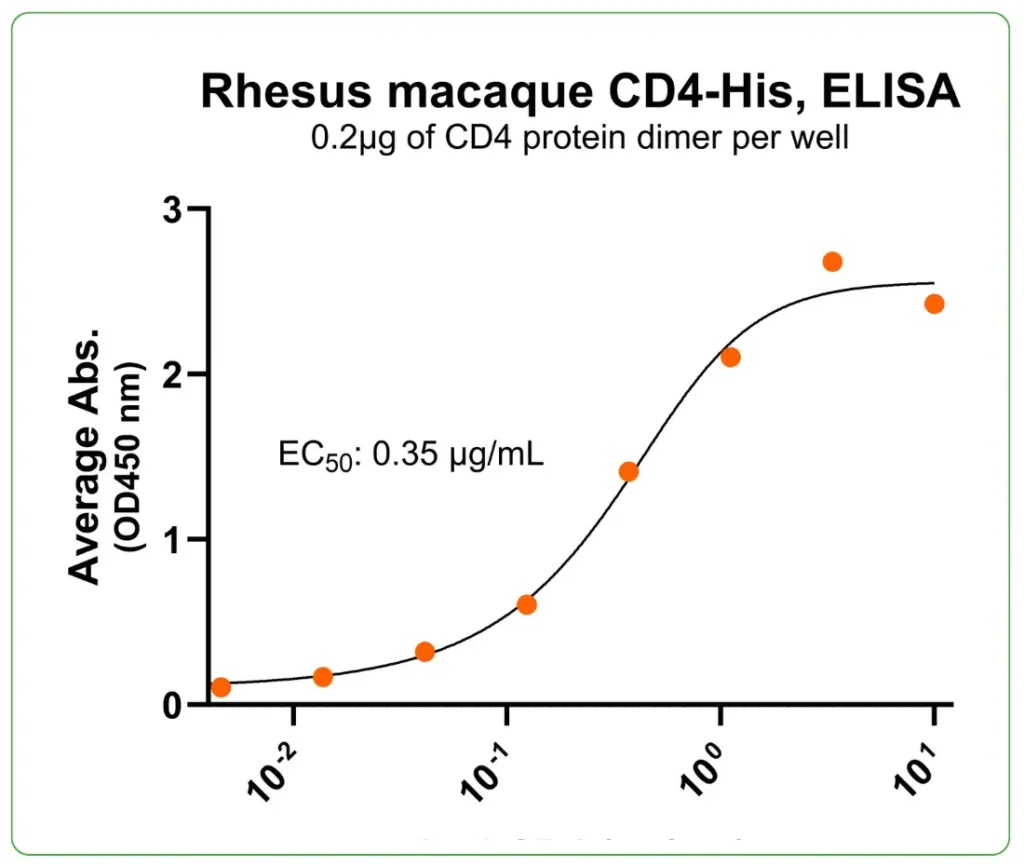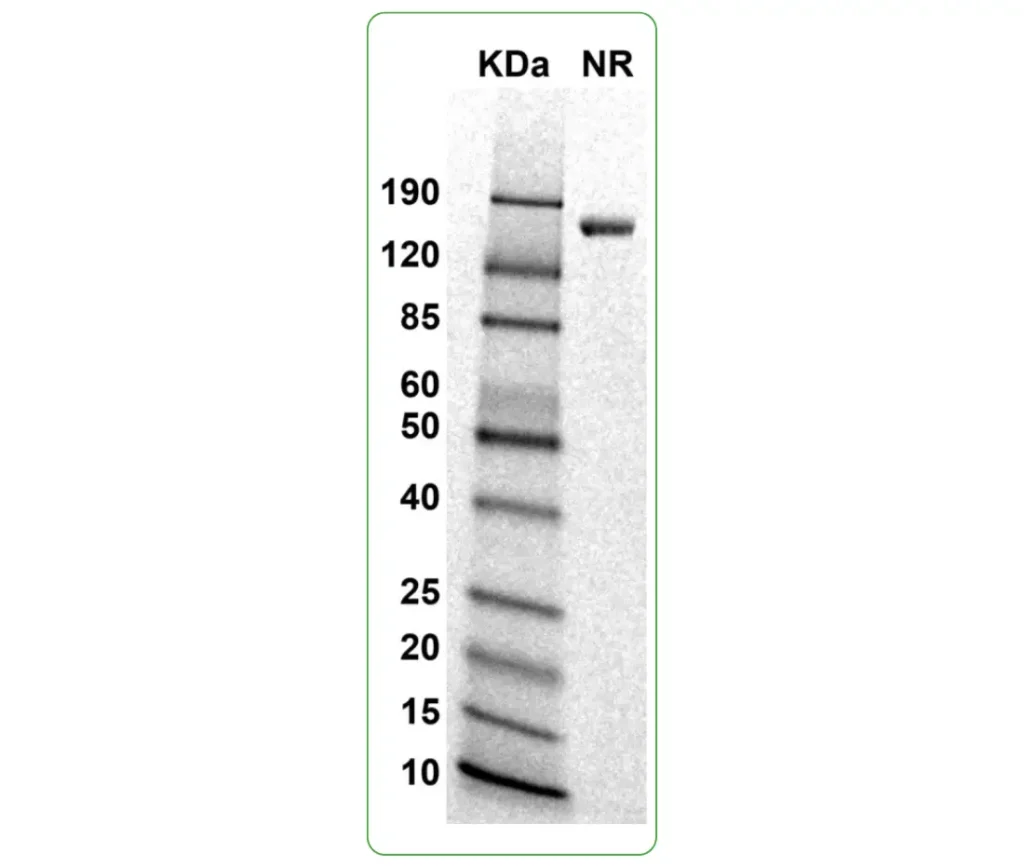Rhesus Macaque CD4 Protein Dimer, His Tag
| Product Code | CSP-24038 |
| Expression Host | HEK293T |
| Verified Applications | ELISA for CD4-specific antibody binding assays. |
| Suggested Applications | SPR & BLI for CD4-specific antibody binding assays. Animal immunization, RUO. |
| Purity | Greater than 90% dimer form as determined by SDS-PAGE under non-reducing condition |
| Amino Acid Range | K26-P396 |
For Research Use Only (RUO)
Price: $125.00
Price: $195.00
Price: $350.00
Price: $750.00
Price: $2,500.00
Bioactivity – Antibody Binding
Immobilized Rhesus macaque CD4 protein dimer, His Tag (Cat No. CSP-24038) at 2 μg/mL (100 μL/well) can bind anti-Rhesus macaque CD4 monoclonal antibody with half maximal effective concentration (EC50) range of 0.18-0.71 μg/mL (QC tested).
SDS-PAGE
NR: CD4 dimer under non-reduced condition
Specifications
Formulation: 0.22μm filtered PBS, pH 7.4
Shipping: Frozen Dry Ice
Storage: -80°C
CD4 is Type 1 integral membrane glycoprotein protein on a T cell surface, also known as known as T-cell surface antigen T4/Leu-3. The recombinant CD4 protein dimer (CSP-24038) is a cis-homodimer (cis-dimer) and contains a CD4 extracellular domain (UniProt# P16003, amino acids Lys26-Pro396) fused with a proprietary cis-dimer motif followed by a His tag at the C-terminus. This dimeric protein is expressed in HEK293T cells. The recombinant Rhesus macaque CD4 protein dimer binds CD4-specific antibodies. This CD4 dimer can be used as an antigen for in vitro assays and antibody screening, and as an immunogen for immunization to generate antibodies targeting more conformational epitopes.
Protein Name: CD4
UniProt #: P16003
Predicted Molecular Weight: 98 kDa
SDS PAGE Molecular Weight: The migration range of the dimer protein with glycosylation under non-reduced condition is between 120 and 190 kDa on SDS PAGE.
Protein Construct: CD4 dimer protein contains a CD4 extracellular domain (UniProt# P16003) fused with a proprietary cis-dimer motif followed by a His tag at the C-terminus.
Background
CD4 is Type 1 integral membrane glycoprotein protein on a T cell surface, also known as known as T-cell surface antigen T4/Leu-3. CD4 contains an extracellular domain, a transmembrane domain and a cytoplasmic domain. The extracellular domain has 4 immunoglobulin-like (Ig-like) domains: one Ig-like V-type domain and three Ig-like C2-type domains. The CD4 extracellular domain is responsible for MHC class-II antigen/T-cell receptor interaction and T cell activation. CD4 is also known as interleukin 16 receptor (IL16R). The IL16 cytokine binds CD4 to activate a downstream signaling cascade. CD4 is also the primary receptor for the human immunodeficiency virus (HIV) envelope glycoprotein gp120 to mediate HIV infection and entry into host T cells, as the underlying cause of acquired immune deficiency syndrome (AIDS). Rhesus macaque CD4 is a species-specific tool essential for preclinical studies, basic research, and translational research in cancer immunotherapy.
Alternate Names: T-cell surface antigen T4/Leu-3


